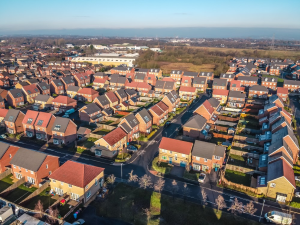 The Office for National Statistics (ONS) has explored which groups of people are more likely to live in homes with lower energy efficiency across England and Wales, and how that might affect them, using data from Census 2021 and energy performance certificates (EPCs).
The Office for National Statistics (ONS) has explored which groups of people are more likely to live in homes with lower energy efficiency across England and Wales, and how that might affect them, using data from Census 2021 and energy performance certificates (EPCs).
image for illustration: Open Government Licence v3.0
… households with older adults and….multiple generations….likely to be living in these lower energy efficiency homes…
Office for National Statistics (ONS) writes:
With the energy price cap due to rise in January 2024, we have explored who might find it more difficult to heat their homes. To do this, we have used data from energy performance certificates (EPCs) and household information from Census 2021.
Of homes with an EPC, around 8 million homes in England (58%) and 460,000 in Wales (62%) were rated below band C. We have used this as a threshold for a low energy efficiency home, in line with UK government targets for fuel-poor homes to meet this standard by 2030.
We found that households with older adults and those with multiple generations living in them were disproportionately likely to be living in these lower energy efficiency homes. A home with lower energy efficiency may be harder to keep warm and more expensive to heat.
Keeping homes warm enough is particularly important for certain groups, including older people.
However, living in a low energy efficiency home is not automatically a sign of financial vulnerability over winter, with owner-occupied homes and detached homes both more likely to have lower energy efficiency.
People aged 65 years and over were less likely than other age groups to report finding it difficult to afford energy bill payments, according to data from our Opinions and Lifestyle Survey collected between July and October 2023. However, they were more likely than some younger age groups to report cutting back on gas and electricity usage because of the rising cost of living.
Around 40% of all properties across England and Wales did not have an EPC by 2021, meaning they haven’t been included in this article. As EPCs are only required when a house is let or sold, certain types of homes are more likely to fall into this category.
Other breakdowns of homes’ energy efficiency by household characteristics such as employment type, ethnicity, religion, and vehicle ownership are included in our associated data tables.

